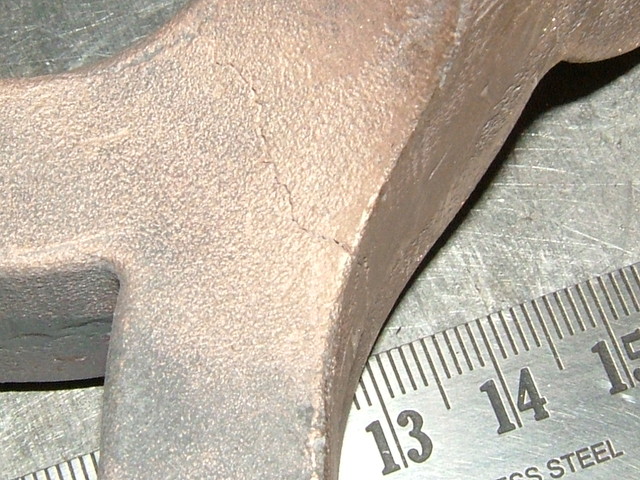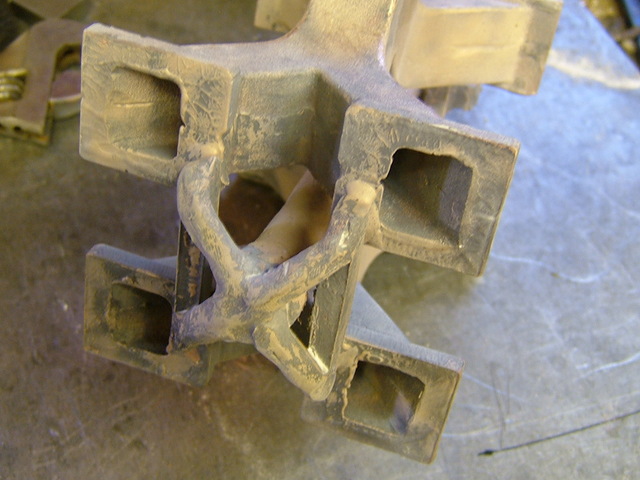I have been acquiring the materials to make lead-free bearing bronze castings, and have researched it quite a bit.
Silicon Bronze:
I considered making silicon bronze, which is what the art folks use for cast sculptures, and it is mostly copper.
A common brand name for silicon bronze is Everdur.
Nominal Composition:
While silicon bronze is suppose to be very easy to melt and pour, without the zinc burnoff problems, what I need for model engine work is the wear characteristics of leaded bronze.
I have phased out almost all leaded metals from the shop, with the exception of some steel hex stock which I use to make screws/bolts.
Boat Shaft Bronze:
I have a lot of old bronze boat shaft, and so I made some bearings from that material, and the stiction was so bad that no matter how loose the bearing was, the shaft would not rotate in it.
Boat shaft bronze seems to be the worst material in the world to make bearings from.
I found this info on the net:
Most of the old "bronze" shafts were made of what is commonly referred to as Tobin Bronze.
Tobin Bronze is 60%copper, 39.25% Zinc and 0.75% Tin.
Leaded Bearing Bronze: (I have gotten away from any leaded products for foundry use, but this is for general information)
Leaded bearing bronze (C93700 or SAE64) (Copper=80%, Tin=10%, Lead=10%).
Lead-Free Bearing Bronze C89835, Bismust Tin Bronze
(Copper=87%, Zinc=3%, Tin=6.7%, Bismuth=2.2%, Antimony=0.35%, Iron=0.2%, Lead=0.09%, Nickel=1%, Phosphorus=0.1%, Silicon=0.005%, Sulfur=0.08%)
So the above recipe for lead-free bearing bronze is what I intend to cast into bearing shapes.
I have been gathering the various metals, and I think I have everything except the lead, which I will probably omit.
For phosphorus, I am using the material commonly used to solder copper pipe for refrigerant lines, and it is an alloy, so I have to calculate the correct amount in order to get my 0.1% phosphorus.
You don't want to dump raw phosphorus into molten meltal I don't think.
As with many volatile additives, such as the magnesium that you add to gray iron in order to cast ductile iron, the magnesium has to be alloyed with some other metal, else it will just cause a huge fire or explosion when added to molten metal.
How to Melt:
I started asking around about how to add the various metals, and what to melt first.
Obviously anything you add to molten metal must be very dry (perhaps even oven baked), because any slight residual moisture on the surface of anything can cause a molten metal explosion in a crucible.
Here is one video I found by one of my casting buddies:
I have not tried these methods, and so can't vouch for anything in this video.
Melt Cover:
Some folks use broken glass on top of their brass/bronze melts, which seals the molten metal from the atmosphere during the melt, to prevent zinc burnoff.
I am reluctant to add glass to a melt, since I am not doing sculptures, but rather making engine bearings, so I don't want any foreign material in the bearing.
They say you can skim off the glass at the end of a melt, but can you get it all out? Not sure.
So to try and address some of your questions:
1. Can you use or make a product such as silicon bronze, and basically avoid the zinc ?
2. I think if you must have zinc, you could add a calculated amount of brass towards the end of the melt.
I would not add raw zinc to a molten pool of metal, but it may be possible under certain conditions that can contain the reaction safely.
3. Zinc does burn off during a brass melt, and the fumes should be avoided.
I did melt and pour some brass, and a lot of the zinc did seem to burn off, with lots of smoke (zinc fumes to be avoided), but the zinc burnoff did not seem to otherwise negatively affect the casting.
4. I have seem some aluminum bronze, and have a sample, but it is basically unmachinable because it is extremely hard.
5. I would not worry about a skin on the spure or basin, if the casting turned out well.
I am not sure exactly what your black deposit is, and that sounds a bit unusual, and I would not expect that.
So perhaps try to make an Everdur-type silicon bronze alloy, to avoid zinc burnoff problems.
Or perhaps try to make a lead-free bearing bronze, which has very little zinc in it, and use some brass as a source for the zinc.
That is my 2 cents worth, coming from someone who has not yet made lead-free bearing bronze, but who is about to try it.
.
Edit:
As a general approach, I plan to melt the metals that make up the bulk of the alloy first, and add the trace amount alloys after the other metals are molten, probably by plunging them (being ready for a reaction with lots of safety gear).
I will probably wrap all the trace metals in aluminum foil, and plunge then to the bottom of the melt.
If you try to add the trace materials at the beginning of a melt, I would guess they would burn off during the melt.
I add a small amount of ferrosilicon to my iron melts, and I add it to the molten metal immediately before I pour, since the ferrosilicon effect only lasts a few minutes after you add it to the metal.
Edit02:
I notice in the video that he uses pennies as a source of zinc.
Modern pennies (US coin) are copper-plated zinc.
Old pennies are solid copper.
.


































































